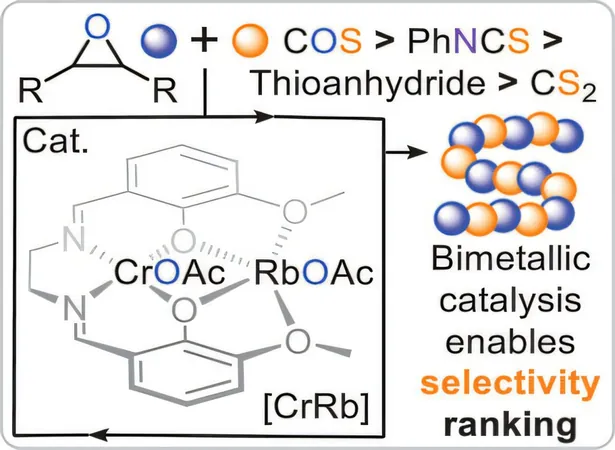
Revolutionary Breath Sensor Hints at Diabetes Diagnosis in Minutes!
2025-08-25
Author: Mei
Cutting-Edge Technology Could Change Diabetes Detection
Innovative researchers from Penn State and Hebei University of Technology have unveiled a groundbreaking sensor that may transform diabetes diagnostics forever. This device can assess diabetes and prediabetes in mere minutes, simply by analyzing a breath sample!
The sensor is a marvel of engineering—a highly sensitive acetone gas detector built from zinc oxide and laser-induced graphene. Uniquely crafted with ultralow detection limits, it operates through a simple drop-casting technique combined with one-step laser direct writing. Say goodbye to complicated blood tests!
Breath Your Way to Diagnostics: How It Works
Unlike previous methods that rely on glucose from blood or sweat, this innovative sensor focuses on acetone levels in your breath. Everyone emits a small amount of acetone, but levels exceeding 1.8 parts per million can indicate diabetes. This means that a simple exhalation into a bag could provide faster and accurate results than ever before.
"We previously had sensors for glucose in sweat, but they necessitated inducing sweat through exercise or chemicals—neither practical nor convenient," says Huanyu Cheng from Penn State. "Our breath sensor only requires you to breathe into a bag, dip the sensor, and wait a few minutes. It couldn’t be easier!"
Innovative Design: Laser-Induced Graphene
What makes this sensor even more tantalizing is its design. Using a CO2 laser, researchers transform carbon-containing materials like polyimide into patterned porous graphene. This method allows the graphene to capture gas molecules more effectively.
"It’s like toasting bread too long—you create carbon black by burning it, but we use the laser to create few-layered, porous graphene, perfect for gas detection," Cheng explains.
Overcoming Challenges with Clever Solutions
However, challenges remained. The sensor had to filter out water vapor present in breath that could interfere with acetone detection. The team introduced a moisture barrier layer that blocks water while allowing acetone to pass through, ensuring accuracy.
Next Steps: From Bag to Wearable!
Currently, users must breath into a bag to prevent environmental factors from affecting results. But Cheng envisions future improvements that would allow the sensor to be worn directly under the nose or integrated into a mask. This would make real-time health monitoring a possibility.
Imagine tracking acetone levels in your breath to optimize health initiatives related to diet and exercise, much like glucose monitoring. Cheng notes, "Understanding how acetone levels fluctuate with lifestyle changes would open exciting new avenues beyond diagnosing diabetes!"


 Brasil (PT)
Brasil (PT)
 Canada (EN)
Canada (EN)
 Chile (ES)
Chile (ES)
 Česko (CS)
Česko (CS)
 대한민국 (KO)
대한민국 (KO)
 España (ES)
España (ES)
 France (FR)
France (FR)
 Hong Kong (EN)
Hong Kong (EN)
 Italia (IT)
Italia (IT)
 日本 (JA)
日本 (JA)
 Magyarország (HU)
Magyarország (HU)
 Norge (NO)
Norge (NO)
 Polska (PL)
Polska (PL)
 Schweiz (DE)
Schweiz (DE)
 Singapore (EN)
Singapore (EN)
 Sverige (SV)
Sverige (SV)
 Suomi (FI)
Suomi (FI)
 Türkiye (TR)
Türkiye (TR)
 الإمارات العربية المتحدة (AR)
الإمارات العربية المتحدة (AR)